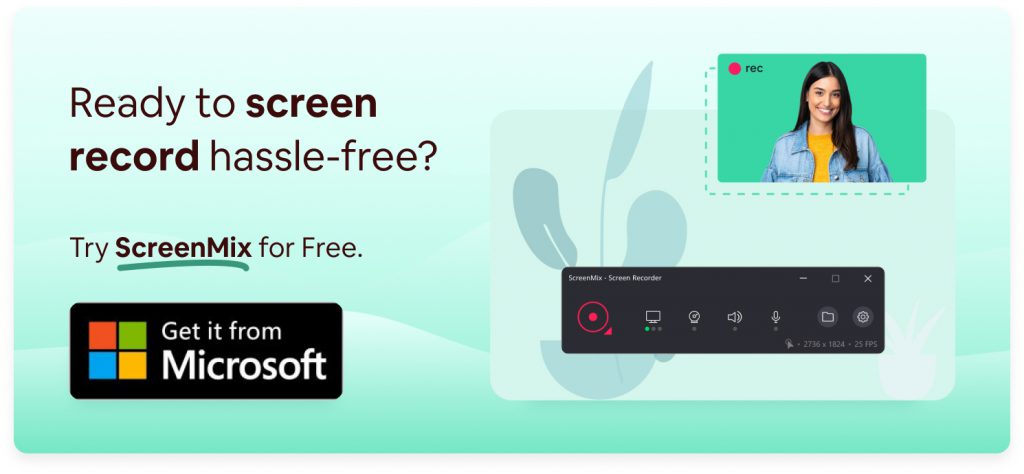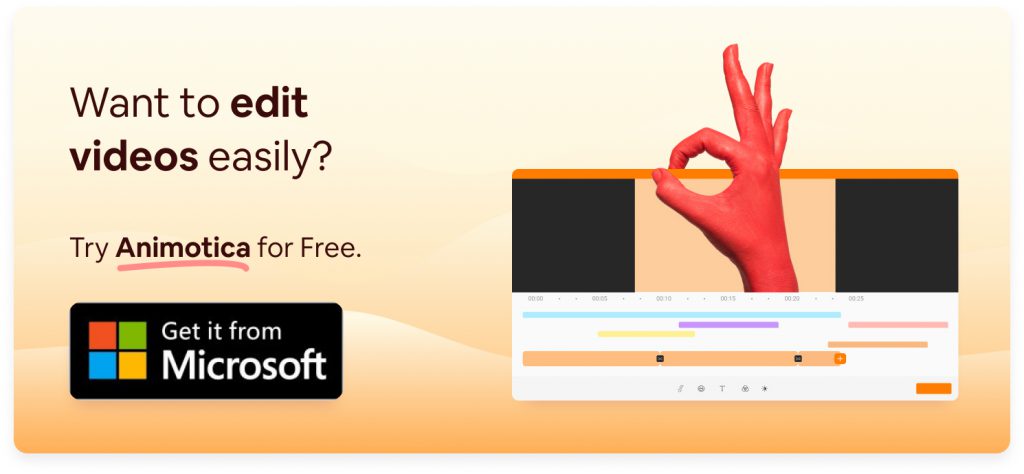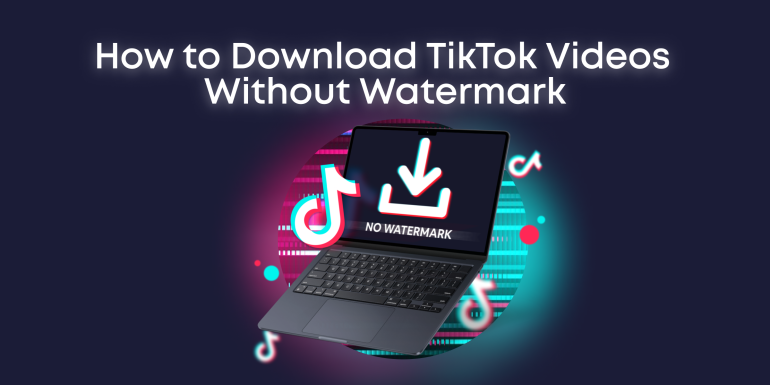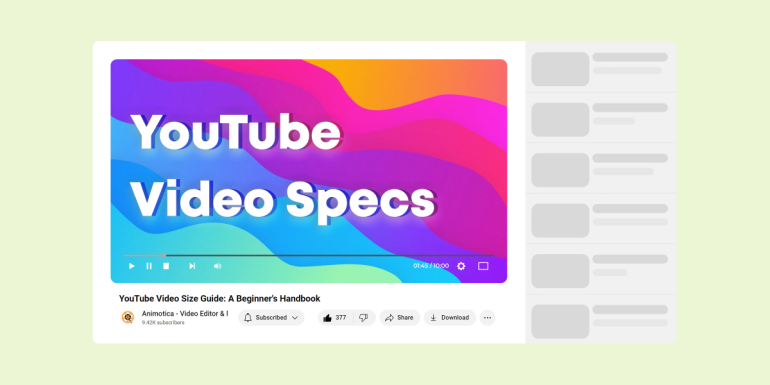In a world increasingly connected by digital threads, video content is a formidable contender in the quest for audiences’ attention. Whether you’re a content marketing novice or a seasoned video creator, establishing and maintaining a strategic video content calendar can feel like navigating uncharted waters. But don’t be daunted; it’s far from impossible. In this guide, you’ll be walked through the entire process, unthreading the complexity of this task and presenting it in digestible, actionable steps. The result? Empowering you to create, manage, and optimize your video content like a pro, irrespective of your experience level.
“Mastering the art of video content marketing, one calendar entry at a time.”
- Discover the what, why, and how of a video content calendar
- Unpack and action each step of the creation process
- Utilize a selection of tools and resources to level up your productivity
- Become a maestro of consistency in deploying videos
So, buckle up and prepare for your journey toward mastering the art of video marketing, one calendar entry at a time!
Contents
What is a Video Content Calendar?
A video content calendar gives you a clear picture of your video strategy for a specific timeframe. It might be for a month, a quarter, or a year. You can see it as your roadmap for creating, editing, and sharing videos your audience will love.
Each item in your calendar should have specifics like the video title, a brief description, where it will be posted, the best time to post it, and who is responsible. It’s an excellent way for teams to coordinate, keep a consistent brand identity, and ensure content aligns with broader marketing goals and events.
A straightforward layout helps ensure videos are published regularly and on time. It also allows you to watch and analyze how well your videos do. In other words, a video content calendar is a must-have tool for achieving your video content goals smartly and efficiently.
Why is Video Content Calendar Important for Content Creators?
A video content calendar is your strategic ally in digital content creation. It’s your blueprint and tracking device, ensuring your content pelts along the right trajectory toward success. But why does the video content calendar hold significant importance for content creators?
- Consistency: When it comes to building and nurturing an audience, consistency is critical. A well-optimized content calendar guarantees a steady stream of content, which can exponentially improve audience engagement and lead to higher retention rates.
- Quality Control: In the rush to maintain an active online presence, quality can sometimes take a backseat. A video content calendar helps prevent this pitfall. It allows for adequate planning, production, and editing time. This balanced schedule ensures every video you release is polished and value-driven.
- Strategic Planning: A video content calendar lets you strategically time your content according to seasonality, holidays, and events relevant to your sector. By scheduling content around these key dates, you can increase the impact and reach of your videos.
- Reduced Stress: Deadlines, if not managed correctly, can be anxiety-inducing. A content calendar negates last-minute cramming and helps evenly distribute work over time, relieving unnecessary stress.
From enhancing audience engagement to ensuring consistent, quality content, the importance of a video content calendar is immeasurable. With tools like Animotica, even beginners can effectively manage and produce vibrant, engaging videos to populate calendars.
How to Make a Video Content Calendar: From Concept to Execution
To formulate your video content calendar, a handful of progressive steps can make the process less intimidating and more structured. These follow from concept development to execution, and each is equally crucial. Let’s dive in.
Step 1: Define Your Video Content Goals
Start your video content creation journey by figuring out your goals. Ask yourself why you are creating videos. Are you looking to raise brand awareness, attract visitors, engage users, teach your audience, or promote a product?
When you identify your goals, make sure they are clear and detailed. The more precise your goals, the easier it is to track your progress and tweak your strategy if needed. Use the SMART method to define your goals:
- Specific
- Measurable
- Achievable
- Relevant
- Time-bound
These SMART goals will guide your content creation and keep you focused.
Here’s a sample of how to craft your goals using the SMART approach.
| Goal Category | Specific | Measurable | Achievable | Relevant | Time-bound |
|---|---|---|---|---|---|
| Reach | Increase video views by 20% | Measure views daily | Optimize videos and promote them on social channels | Increases brand visibility and audience engagement | Within the next quarter |
| Engagement | Boost audience engagement rate by 15% | Monitor likes, shares, comments, and watch time | Create engaging and relevant content | Higher engagement could lead to more leads and conversions | In 2 months |
| Conversion | Increase conversions by 10% from video content | Track conversion metrics | Use strong call-to-actions in video content | Directly impacts revenue | By year-end |
Checking your goals regularly and ensuring your content aligns with them is an intelligent strategy. This practice guarantees you always produce consistent, goal-focused content, an essential element for any successful video content strategy.
Step 2: Identify Your Audience
Getting to know your audience is critical. Don’t think about who they are but what they do, need, and want. By doing so, your video content will connect on a deeper level.
Want to get started? First, develop audience personas. These personas are fictitious profiles representing viewer segments. They help map the audience’s journey and understand the content they enjoy. This offers a clear picture of those you wish to reach with your videos.
Then, observe your engagements. Who’s interacting with your videos? What content generates the most interaction? Understanding these aspects can guide your future video content, ensuring it caters to your audience’s desires and keeps them engaged.
Finally, request feedback. Use social media or online surveys to learn more about your audience’s preferences. Do they favor shorter or longer videos? Funny or informative content? Knowing their tastes will help align your videos with your audience’s interests.
Step 3: Brainstorm Content Ideas
Now that you’ve defined your goals and identified your target audience, it’s time to brainstorm content ideas for your video calendar. This process requires creativity, research, and understanding your audience’s interests.
To start, look into trending topics in your niche. What’s new? What’s hot? Use these insights to create engaging and relevant video content your audience would love to watch.
You can also listen to your audience. Engage with them on social media, read the comments they leave on your blog or video posts, and ask for their input. What are they interested in? What issues are they facing? Use these clues to create informative and problem-solving content.
And last but not least, experiment! Video content allows for a lot of flexibility. You can create tutorials, interviews, product demonstrations, and behind-the-scenes footage – endless possibilities! Mixing up different types of content will prevent monotony and keep your audience engaged.
So, put on your thinking hat and start brainstorming. Remember, the quality of your ideas will determine the success of your video content strategy!
Step 4: Choose Your Platforms
To select the best platforms for your video content, you need to understand where your target viewers spend their time. Among the most popular are YouTube, Instagram, and TikTok, each with unique offerings.
As you move forward with platform selection, it’s worth considering the demographics, user behavior, and content format that best suits each. The table below breaks down some essential features of top video-sharing platforms to help guide your decision:
| Platform | Audience Age Range | Type of Content | Ideal for |
|---|---|---|---|
| TikTok | Under 30 | Dance trends and funny clips | Targeting younger audiences with innovative, entertaining content |
| YouTube | All Ages | Diverse: How-to’s, Vlogs, Educational Videos, Reviews | Long-form content providing in-depth info |
| 18-35 | Visually compelling stories and posts | Consumer-focused brands with solid visuals | |
| 25-45 | News, articles, and user-generated content | Building communities and sharing valuable content with followers |
In deciding where to post your video content, consider where your audience regularly engages and their preferred content type. Stay updated on platform trends and formats to create engaging content that keeps viewers returning.
Step 6: Decide on Video Frequency and Scheduling
After choosing your platforms, it’s important to take the essential step of deciding your video frequency and scheduling. This means determining exactly how often you’ll be posting videos and at what times. Consistency is crucial to maximize the impact of your video content.
Do you plan to release content weekly, bi-weekly, or monthly? Consider the resources and time you have available and your audience’s preferences—research to find out what times have yielded high engagement rates. Depending on your target demographic, this could be after work hours or over the weekend.
Consistency builds a sense of expectation and regularity among your audience and helps you stay organized. You’ll need a clear view of deadlines, giving you ample time for editing, reviewing, and making necessary adjustments.
Remember, your schedule shouldn’t be rigid. Flexibility is vital as some content pieces may take longer to create; at other times, external factors may affect your process. Therefore, it’s wise to have a buffer for any unexpected changes.
Step 7: Creation and Editing
Embarking on the video creation journey may appear daunting, but it becomes simpler when equipped with suitable tools. Depending on the intricacy of your content, the filming process can range from simply recording a headshot to scripting and setting up locations. A tool such as ScreenMix is great for fuss-free screen recordings.
Editing is the next stage. With user-friendly video editing tools like Animotica, this phase is made straightforward. Beyond refining your shots, you can insert text, stickers, effects, and background music to match your brand aesthetics with Animotica for a stronger connection with your viewers.
Animotica’s editing functions, like trimming, cutting, and reversing a video, enable you to tailor your content to the minutest detail. Plus, you can add dynamic transitions for a smoother narrative flow in your videos.
As a packed yet easy-to-use tool, Animotica is the ideal video editing solution. Get a feel of its user-friendly interface with a free version today.
Step 8: Optimization and Promotion
After recording and arranging your videos, there’s still more to do: ensuring they get noticed and reach a broad audience. Let’s look at optimized promotion.
Firstly, optimization. Making your video easy to find among the ocean of other content is critical. For YouTubers, this means using the right keywords, engaging titles and descriptions, and attractive thumbnails that are all SEO-friendly. A well-optimized video naturally attracts more views and, as a result, more interaction.
Then, there’s promotion. The aim is to get as many people as possible to see your video. This can involve posting your content on various social media platforms, including it in your email marketing, or even using paid advertising. Remember, a video’s effectiveness depends on its reach.
Planning your promotional strategy is essential – this is where your video content calendar comes in. It helps you organize your marketing efforts, ensuring you know when and where you’ll be promoting your videos. With a clear strategy, you can track your video’s success and change your approach if needed.
Best Practices for Maintaining an Organized Video Content Calendar
Staying on top of an organized video content calendar is no small task, but the right strategies can transform it from challenging to second nature. Here are some best practices to help you maintain order while consistently publishing impactful video content.
Allocating Time for Review and Adjustments
It’s crucial to check your video content calendar regularly. Set some time each week to do this. Maybe a video didn’t hit the mark, or your reviews show a different peak viewing time.
Your calendar should grow with your video content strategy. This helps you adapt your approach flexibly based on results, current trends, and how your audience behaves. It’s all about making small, consistent changes to get a better video strategy over time.
Remember that an effective content calendar is constantly changing and can adapt—use these traits to keep your video content engaging and up-to-date.
Keeping Track of Video Performance
Keeping an eye on how your videos are doing is crucial in managing a great video content calendar. After you’ve shared your videos, check how they’re doing to see if they’re reaching your goals and connecting with your viewers.
You should pay attention to a few main things, like how many views your videos get, how people engage with them (likes, shares, comments), how many people click on them, how long viewers stick around, and how many visitors become customers. These details can help you understand what type of videos your viewers want, when you should post, and how much your videos boost your business.
Consistent Branding
Consistency is key regardless of the type of content you’re producing, especially in video branding. This involves maintaining a standard in color schemes, tone of voice, overlays, and intros or outros. Consistency in these areas helps reinforce your brand identity, creates a professional impression, and generates familiarity with your audience. Think of your favorite television show; it probably starts with an identical introduction to each episode, right? It’s the same principle with your video content.
By consistently incorporating your brand’s signature elements into your video content, you’ll ensure that your videos are immediately recognized as uniquely yours. As with anything, consistency breeds familiarity and trust – integral components in any content creator’s journey.
Tools and Resources for Optimizing Your Video Content Calendar
Creating a stellar video content calendar requires the correct tools to streamline the process. Let’s delve into a selection of resources that can be a game-changer for your content planning.
Social Media Schedulers
Are you starting your journey with a video content calendar? Social media schedulers can be your best friend. They manage, schedule, and publish your video content across different social media sites. You can use tools like Hootsuite, Buffer, or Sprout Social to schedule your posts ahead of time. This helps keep your uploads consistent and your workflow organized.
These tools are great for a few reasons. First, they let you schedule posts for when your audience is most likely to engage. There is no need for you to post every piece of content manually. Secondly, they can post to multiple platforms at once automatically. In short, social media schedulers make your video content calendar easy to manage and efficient.
Analytics Tools
Analytics tools are key to understanding how well your videos perform. They give you detailed feedback on how your audience interacts with your content, which can guide your strategic tweaks for better results.
Metrics like the number of views, duration watched, likes, shares, comments, and conversion rates are essential. These figures highlight what’s going well, what’s falling short, and the areas needing more work. Plus, they can help point out trends that could inspire your next content idea.
You can find these insights on platforms such as Google Analytics, YouTube Analytics, or specific social media tools based on where your videos are posted. But analytics isn’t just about tracking how your videos perform; it’s also about knowing your audience better. Advanced analytics tools let you break down your viewer base by age, location, and user behavior.
Keyword Research Tools
Keywords are not just essential for written content but also for video content. Tools that help you find your audience’s wording when searching can help you make content that meets their needs. Using these keywords in your video titles, descriptions, and tags can improve your video’s search engine optimization (SEO). This makes it easier to find.
Many tools are out there for finding keywords; some work better than others. Google’s Keyword Planner is a popular choice because it uses data from Google’s search engine. But other options like Moz, SEMRush, and Ahrefs offer detailed information, too.
You don’t always have to use standard SEO tools for keyword research. You can also see what competitors, hot topics, or hashtags are prevalent in your field. Recognizing what’s popular lets you create content that’s on trend.
Video Editing Tools
If you’re new to video editing, don’t worry. Animotica is an easy-to-use tool designed to help beginners like you get started quickly. Its simple interface and ready-to-use templates make video creation a breeze.
With Animotica, you can do things like cut, crop, and rotate videos. Plus, it helps streamline your content calendar.
Want to take your content to the next level? Animotica offers premium features like video overlays, adding audio, and tricks like slow motion and reverse video for free.
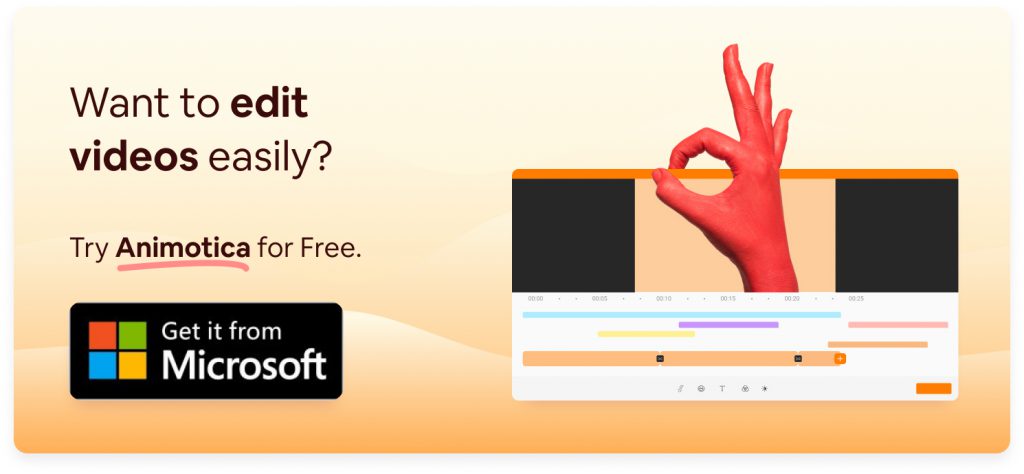
If you’re a Mac user, don’t fret. You have great options, like iMovie, Adobe Premiere Rush, and Final Cut Pro. These tools offer many features, from basic edits to advanced motion graphics. Like Animotica, these tools will help you master video creation quickly.
Wrapping Up
Building a strategic video content calendar can feel overwhelming at first. Still, with simple steps like those we’ve shared here, it’s possible for anyone, novice or pro, to create impactful video content regularly. The benefits of consistent content – like boosting brand recognition, engaging your audience, and hitting marketing targets – are just too vital in our digital world to ignore.
We hope this article has taught you something new and inspired you to take action. And when it comes to tools, we recommend Animotica. Its easy-to-use interface and ready-made templates make it a top pick for those starting.
How about seeing it in action? Give Animotica a try with a free version, and feel its user-friendliness first-hand. Please don’t hold back; let’s dive into video content creation and create something truly unique.
FAQ
What are Some Common Challenges in Creating a Video Content Calendar, and How Can I Overcome Them?
Creating a video content calendar can seem tricky, but don’t worry. Let’s tackle common problems like brainstorming ideas, managing time, keeping up with video quality, and following a regular posting schedule. We have the solutions!
- Generating Regular Content Ideas: It’s normal for your idea to train to get stuck sometimes. But remember, there are ideas all around you! Look at everyday situations, customer stories, hot topics, or even what your competitors are doing. Make a mix of timeless content and trendy videos to keep things interesting. Most importantly, listen to your audience’s feedback. Their questions and comments can give you direct ideas about what content they would like to see.
- Managing Time: Creating video content can take up much of your time. Planning your schedule and prioritizing tasks, you can manage this more effectively. A popular method to adopt is batching tasks – for example, shooting and editing several videos in one go. With Animotica, this process is infinitely easier thanks to its user-friendly interface and intuitive editing features.
- Sticking to a Posting Schedule: Regularly publishing content and sticking to your calendar can be challenging. But there’s help out there! Having content ready in advance and using automated scheduling tools can save you stress, giving you a safety net when things go wrong so your posting schedule doesn’t suffer.
With the right tools and attitude, any challenges you face when creating your video content calendar will become stepping stones to success. Always believe in yourself — you’ve got this!
How Can I Balance Quality and Quantity in My Video Content Calendar?
Balancing quality and quantity is often a challenging task for video content creation. However, it isn’t an impossible endeavor. Here are several tips to keep in mind:
- Create a realistic video production schedule: Prioritize consistent, quality content over quantity. If you notice the quality of your videos deteriorating due to a tight schedule, it may be best to adjust your video content calendar accordingly. Stick to a pace that allows you to maintain your standards.
- Focus on the needs of your audience: Don’t create videos to fill your content calendar. Instead, consider the interests and needs of your audience. Remember that one high-quality video that resonates with your audience is worth more than several low-quality ones that don’t.
- Constantly evaluate and adapt: Regularly track the performance of your videos and use the insights to make necessary adjustments. If a specific type of content is well-received, consider creating more of the same theme. Alternatively, don’t hesitate to reassess and change your strategy if a video doesn’t get the expected engagement.
Finding the right balance between quantity and quality is a dynamic process that requires ongoing adjustments. Remember, the goal is to serve your audience with the best possible content to keep them engaged and returning for more.
Can a Video Content Calendar Help in SEO Ranking?
Indeed, a well-structured video content calendar can substantially contribute to an improved SEO ranking. Here’s how:
- Consistent Publishing: Search engines favor websites with regular and fresh content updates. Scheduling and tracking your video posts through a content calendar ensures this consistency, signaling to search engines that your site is active and up-to-date.
- Quality Content: A content calendar allows you to plan and polish your content, enhancing its quality. High-quality videos attract more engagement – likes, shares, and comments, which search engines consider positive user interaction signals, thus boosting your SEO.
- Optimized Metadata: Including SEO-optimized titles, descriptions, tags, and captions for each video in your calendar helps search engines understand your content better, further improving your visibility in search results.
- Strategic Keyword Usage: A video content calendar also allows for strategically incorporating and distributing relevant keywords across your video content. This increases your chances of appearing in keyword-specific searches, boosting your SEO.
So, a content calendar keeps you organized and enhances your video SEO strategy. Remember, effective planning with purposeful strategy combines excellent success in video marketing.


